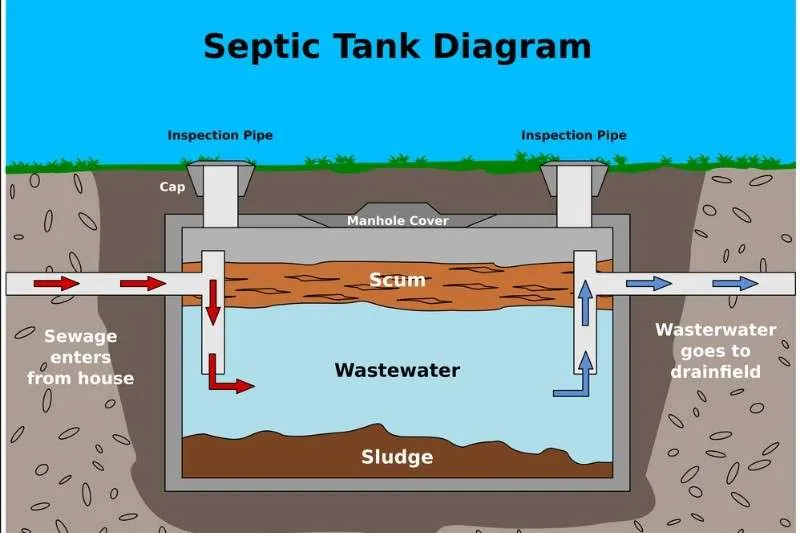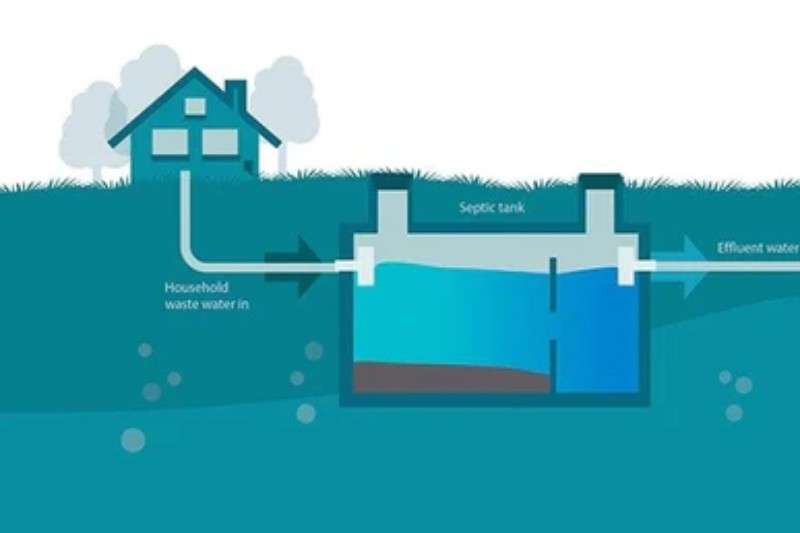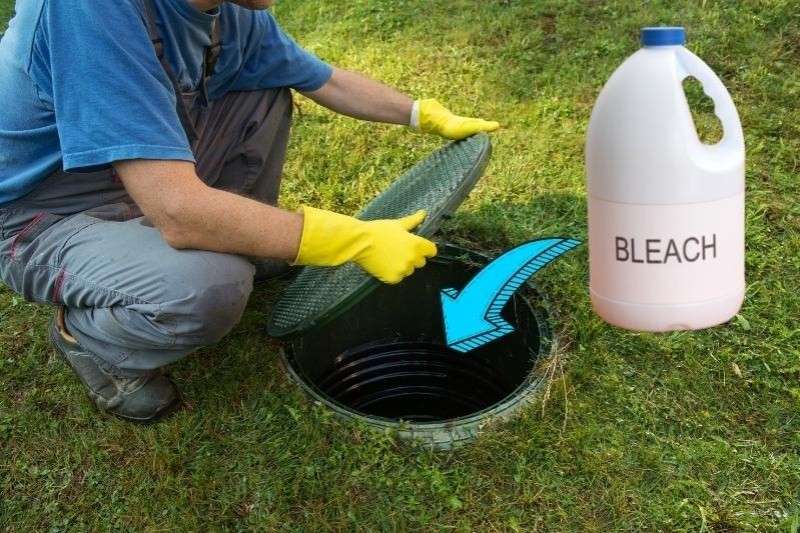Are you aware of the importance of keeping your septic system well-maintained? Septic Safe Bleach is a great ally in ensuring your home’s septic system works properly.
Through its powerful and effective cleaning solutions, it not only helps keep your septic tank clean but can also reduce the amount of time it takes for the waste material to break down. As such, many homeowners are turning towards this bleach as their go-to solution for maintaining their systems running efficiently and effectively.
In this blog post, we’ll discuss more about Septic Safe Bleach.
Introduction to Septic Systems: Basic Overview and Functioning.

Septic systems are important for properly functioning a home’s wastewater system. A basic overview of septic systems includes understanding the septic system parts that make it up and its main purpose and function.
The most basic part of a septic system is a tank that stores waste material from the house. This tank is usually buried underground and connected to other components like pipes and leach fields. These leach fields help treat the stored water safely before returning it to the environment.
What is Septic Safe Bleach: A Brief Introduction to the Product

Septic Safe Bleach is a powerful yet environmentally friendly cleaning agent for septic tanks. It’s easy to use and effectively reduces the time it takes for waste material to break down. The product is safe for both household and commercial use and is biodegradable.
Septic Safe Bleach kills harmful bacteria, fungi, viruses, and germs on contact, making it an ideal choice for keeping your septic system clean and functioning at its best. The bleach also releases chlorine dioxide, which helps eliminate unpleasant odors caused by bacterial growth in the tank.
With regular use of Septic Safe Bleach, you can be sure that your home’s septic system remains healthy and functioning properly all year round.
Can Septic Safe Bleach be Used in Septic Systems? What the Manufacturer Claims.
Septic Safe Bleach is specifically designed to be used in septic systems. It contains a blend of powerful cleaning agents proven to help break down grease, soft soap scum, and organic waste material.
The manufacturer claims that Septic Safe Bleach won’t corrode plumbing pipes or damage the good bacteria needed to properly function a septic system. As such, this bleach can be used safely without damaging your home’s plumbing infrastructure.
The Risks of Using Harsh Chemicals in Septic Systems.
Septic systems are essential to many residential and commercial properties, collecting waste material and ensuring it is safely disposed of. However, using harsh chemicals to clean and maintain septic tanks can pose a significant risk to these systems.
The primary risk associated with using harsh chemicals in septic systems is the potential damage they can cause. These chemicals can lead to corrosion of the tank, pipe, and other components over time or even create blockages in the drainage system.
In addition, they often require frequent use to keep a septic system functioning properly – something that may not be sustainable for many households and businesses.
Another risk associated with using harsh chemical cleaners in septic systems is the potential for environmental contamination. When these powerful cleaning agents are used too frequently, they can be released into the environment through runoff, posing a threat to local wildlife and water sources.
Ingredients in Septic Safe Bleach: Are They Safe for Septic Systems?
Septic Safe Bleach is a powerful and effective cleaning solution designed specifically to help keep your septic system in optimal condition. But what exactly is inside this specialized bleach?
This bleach contains sodium hypochlorite, a key ingredient in other household cleaning products. It helps to break down organic matter and reduce the time it takes for the waste material to decompose.
In addition, sodium hypochlorite is an excellent disinfectant that can help protect against dangerous bacteria, fungi, molds, and viruses.
It’s important to note that Septic Safe Bleach contains no chlorine or phosphates; these substances cause excessive foaming and clogging when used with septic systems.
Using Septic Safe Bleach, you can rest assured that your septic system is treated safely and effectively.
Alternatives to Septic Safe Bleach: Other Safe Bleach Products for Septic Systems.
Many safe bleach products on the market can effectively and safely maintain a septic system. These good alternatives to Septic Safe Bleach may include chlorine-free bleaches, oxygen-based bleaches, or enzyme-based bleach products.
Chlorine-free bleaches are a great choice for those who want to reduce their environmental impact while using a product that still does the job. Unlike regular bleach, which contains chemicals, these products rely on natural ingredients such as hydrogen peroxide, sodium carbonate, soda ash or baking soda, borax, and citric acid.
Oxygen bleach products are also an excellent option for homeowners who want an effective cleaning solution without the harsh smell or hazardous chemicals. These bleaches release oxygen in the form of bubbles that work to break down bacteria, fungi, and other microorganisms.
Enzyme-based bleach products are a great choice for those who want an effective cleaning solution without worrying about harsh chemicals. Enzymes are proteins that work by breaking down organic matter, which helps keep your septic system running smoothly and efficiently.
No matter what safe bleach alternatives product you choose, make sure it is specifically formulated for use in septic systems. This will ensure your septic system is protected from harmful chemical residues and continues performing its job effectively and safely.
Best Practices for Maintaining Septic Systems: Tips for Keeping Your System Healthy.
Septic Safe Bleach is a great tool for maintaining your home’s septic system. However, it should not be relied on as the sole source of septic maintenance. To ensure that your system runs optimally and lasts for many years, you must follow best practices for caring for your system.
Here are some tips for keeping your septic system healthy.
Monitor water usage in the house.
Ensure that the water usage in the house isn’t too high or too low; otherwise, it can strain the septic tank, causing issues with its operations.
Check filters regularly
Check your septic tank’s filters regularly to ensure they work properly and are not clogged with debris or other unwanted items.
Avoid harsh chemicals
Harsh chemicals can cause damage to the septic tank and its components, so it’s best to avoid them altogether when possible.
Install an aeration system.
An aeration system can help keep the septic tank running smoothly, as it helps break down waste materials more quickly and efficiently.
Pump out your septic tank annually.
Be sure to pump out at least once a year to remove any built-up sludge or solids in the bottom, which can lead to blockages if left unchecked.
Have your septic tank inspected regularly.
Inspecting and servicing your septic tank regularly ensures everything is running correctly.
Add Septic Safe Bleach when needed.
When using Septic Safe Bleach, follow the instructions provided and only add the recommended amount; too much can cause damage to the system.
Don’t flush foreign objects like feminine hygiene products or wet wipes
Flushing foreign objects like these can lead to blockages that could require costly repairs, so avoiding them altogether is best.
FAQs
Can I use bleach in a washing machine if I have a septic tank?
Yes, you can use bleach in a washing machine if you have a septic tank; however, it is important to remember that using too much bleach or an incorrect type of bleach could be detrimental to the health of your septic system.
Is too much bleach bad for the septic tank?
Yes, too much bleach can be bad for your septic tank. Bleach is a powerful cleaning agent that can damage the natural breakdown process in the septic tank and even corrode pipes over time, so a moderate amount of bleach should be applied.
How do you neutralize bleach in a septic system?
Bleach can be neutralized in a septic system by adding baking soda, vinegar, tea tree oil, lemon juice, hydrogen peroxide, or detergent. All of these substances are effective at reducing the concentration of bleach in a septic tank and will help maintain its health.
How often should I add bleach to my septic?
It is not recommended to add bleach to your septic tank regularly. If you feel it’s necessary to use bleach, it should only be done periodically as a part of a larger septic maintenance program.
What toilet cleaner can I use with a septic tank?
Septic Safe Bleach is an effective and safe toilet bowl cleaner for septic tanks. It has a special formula that helps break down waste quickly and efficiently without damaging the tank or pipes.
Can Clorox be used with a septic system?
Clorox is a type of chlorine bleach, and although it can be used with septic systems, it is important to remember that not all bleaches are created equal. Clorox contains abrasive ingredients which may damage your pipes over time and can inhibit the natural breakdown process in your septic tank.
Is Dawn dish detergent safe for septic systems?
Yes, Dawn dish detergent is safe to use with septic systems. It has a mild formula designed to be gentle on the skin and helps keep your pipes and tank free of harmful residues.
Conclusion
Maintaining a healthy septic system is essential to running your plumbing and septic system smoothly. While the safe use of septic-safe bleach may benefit some consumers, it is important to understand what each ingredient in this product is and its impact on your septic system. Always adhere to tips and best practices for maintaining your septic system, such as having it serviced at least every three years and ensuring no harsh chemicals are used. Additionally, consider using alternative products other than septic-safe bleach if you find this product isn’t right for your needs. Ultimately, the decision is up to you.


